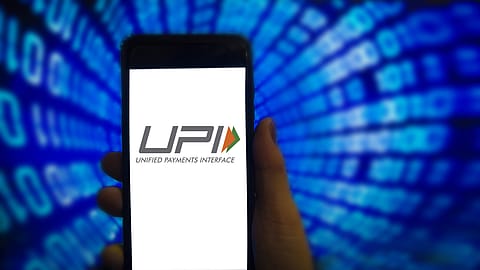New UPI rule shows verified name before payment
Worried about UPI scams? A new NPCI rule now shows the verified bank-registered name of recipients before you make any UPI payment. Here’s how it helps.

Until now, most of us have been making UPI payments using mobile numbers or virtual IDs, often without any clear idea of who’s actually receiving the money. But starting today, that is, June 30, 2025, this will no longer be the case. From now on, every UPI app must show the actual name registered with the bank of the person you are paying.
This change has been made mandatory by the National Payments Corporation of India (NPCI), and it is expected to significantly reduce fraud and mistaken payments. The new rule ensures that users will see only the official name tied to the bank account before confirming a transaction.
This new rule, introduced by the National Payments Corporation of India (NPCI), is meant to stop scams where fraudsters trick people by using fake or misleading names. It's a major step toward making UPI payments safer and more transparent.
The NPCI circular, dated April 24, stated: "Display of only Ultimate Beneficiary Name (CBS name) for P2P and P2PM transactions: UPI applications must ensure that only the ultimate beneficiary's name (the banking name fetched from the Validate Address API) is shown to the user on the pre-transaction details page. Names from QR codes, user-defined payee names, or any other logic should not be displayed to the payer."
"Restrict user detail modification of beneficiary name: UPI apps must disable any features that allow users to modify their 'Beneficiary Name' for transaction purposes within the app interface," said the NPCI circular.
Kunal Varma, Co-Founder and CEO, Freo, said, "Displaying the bank-registered name in UPI transactions is a much-needed fix to tackle rising cases of payment fraud. Until now, fraudsters could misuse custom UPI IDs or misleading display names to trick users into transferring money to the wrong account. This move ensures that consumers clearly see the verified name linked to the bank account they’re paying. It’s a small change in interface, but a big leap in trust and transparency. For users, this means fewer chances of falling for impersonation scams and a safer way to verify who you're really paying, especially in peer-to-peer transactions."
In recent years, digital payment scams have grown in both volume and sophistication, with many cases involving fraudulent UPI IDs, fake business names, and QR code manipulation. This new naming rule brings in a much-needed layer of authentication by removing the possibility of user-created aliases and showing the name that matches the bank’s core system.
Recommended Stories
The mandate applies across all UPI-enabled apps, including Google Pay, PhonePe, Paytm, and banking apps offering UPI services. Users are likely to notice the change immediately during their next payment, as the display name will now reflect the verified name tied to the recipient's bank account.
Recently, a survey by LocalCircles revealed that one in five Indian families using UPI has faced fraud in the past three years, yet over half did not report the incident. Conducted across 365 districts with over 32,000 responses, the survey found phishing, PIN hacking, and fake payment links as common tactics. Despite platforms like the Cybercrime Portal and helpline 1930, reporting remains low, exposing gaps in trust and accessibility.
With UPI handling 185 billion transactions in FY25 and digital frauds making up 56.5% of all banking scams, experts call for stronger measures, including one-click reporting and AI-driven alerts for suspicious activity.